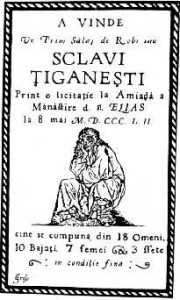Gypsy, Roma and Traveller populations are widely unacknowledged in national histories, except when they are viewed as constituting a social problem. Hazel Marsh examines the history of Roma in Latin America, and recent moves to link Roma struggles for recognition with those of indigenous and other marginalised groups in the region.

Source: https://en.wikipedia.org/wiki/Romani_diaspora
Gabriel García Márquez’s One Hundred Years of Solitude includes a memorable character, Melquíades. A wise and honourable Rom, Melquíades regularly visits Macondo, bringing with him the latest scientific inventions (including magnets, daguerreotypes, ice and telescopes) to demonstrate to the astonished and intrigued inhabitants of the town. The story of the Buendía family itself, which forms the main structure of the novel, turns out to be narrated by Melquíades in Sanskrit-encoded parchment manuscripts that are translated by Aureliano, the last of the Buendías.
Unlike García Márquez’s literary recreation of Colombia’s past, most Latin American history books exclude the presence of the Roma (mistakenly believed at one time to have originated from Egypt, hence the enduring misnomer ‘Gypsy’); it is as if they never existed in the region. Yet today it is estimated that about 1 million Roma live in Brazil, 300,000 in Argentina, between 15-20,000 in Chile, 16,000 in Mexico, 5,000 each in Ecuador and Uruguay, and 8,000 in Colombia (where in 2005, for the first time, Roma were included in the census). Most of these Roma arrived in Latin America for the same reasons their ancestors were compelled to leave Northern India some thousand years ago and adopt a life of frequent, often enforced, nomadism in Europe (hence becoming ‘outsiders’ wherever they stopped); namely, for reasons of racist harassment and systematic persecution.
Adhering to customs and speaking varieties of Romani which have their origins in Northern India, the Roma tend to be seen as ‘foreigners’ wherever they live and have been feared, subjugated and frequently ordered to give up their language and ways by Gadje (non-Roma) authorities. In the 16th century, Spain and Portugal sought to reduce their Roma populations via banishment to the newly conquered territories of the Americas; on his third voyage to the Americas in 1498, Columbus took with him four ‘Egyptians’ whose punishment, imposed by Spanish authorities for the ‘crime’ of being Roma, was commuted to hard labour in the galleys.
The period of ‘legal’ immigration was soon to end; in 1582, Spanish authorities passed a decree forbidding the entry of Roma to their American colonies and ordering that all Roma in the so-called New World be expelled immediately. Many Roma were deported from the Americas, but many others formed rochelas, alternative societies which existed at the margins of colonial legislation and where Roma lived in ‘invisibility’ alongside escaped African slaves, indigenous peoples and other white and mixed-race fugitives and deserters.
For five hundred years, beginning in the 13th century and continuing until 1864, the Roma were enslaved in parts of Eastern Europe. Following independence from Spain, a law was passed in 1821 in the newly-liberated territory of New Granada (present-day Colombia). This new law prohibited the importation of slaves to the region, and stipulated that any slaves from other nations who did arrive would immediately be granted their freedom. As a result of this law, many Roma sought to escape European slavery by fleeing to New Granada, and the waves of migration from Europe to the Americas have continued throughout the 20th century and up to the present day; Roma have fled the Porajmos (the ‘great devouring’, or Holocaust, during which it is estimated that between half a million and one and a half million Roma were killed), the rise of extreme-right ‘white power’ groups, and increasing incidences of racially-motivated murder in the former Soviet Bloc.
In recent years, Roma in Latin America have begun to seek to emerge from ‘invisibility’ and to link their struggles against discrimination and marginalisation with the struggles of indigenous and African-descended groups in the region. In 1997, Colombian Roma formed the Proceso Organizativo del Pueblo Rom (Gitano) de Colombia (PROROM), an organisation that works to highlight the positive cultural and economic contributions Roma have made and can continue to make to the dominant societies in which they live, and to demand recognition of their rights to speak their own language and retain their own cultural identity in a multicultural society. Ana Dalila Gómez Baos, the first identified female Colombian Rom to attend the University of Bogotá and a prominent member of the Partido Polo Democrático Alternativo (PDA) leftist opposition party, points out that in Colombia, violence and violations of human rights have frequently formed part of a strategy that has predominantly affected the most marginalised and impoverished sectors of society; namely, the indigenous, the African-descended, and the Roma. According to Gómez Baos, it is ‘time to show that the Gypsy people can contribute different ways of doing politics in support of an ethnically and culturally diverse society’.
It may indeed be worth listening to a people who have succeeded in maintaining their own cultural identity and internal cohesion in spite of one thousand years of systematic persecution.
Image Credit: Wikipedia
Hazel Marsh is a lecturer in Spanish and Latin American Studies at the University of East Anglia. She is on the executive committee of the Advisory Council for the Education of Romany and other travellers (ACERT)





